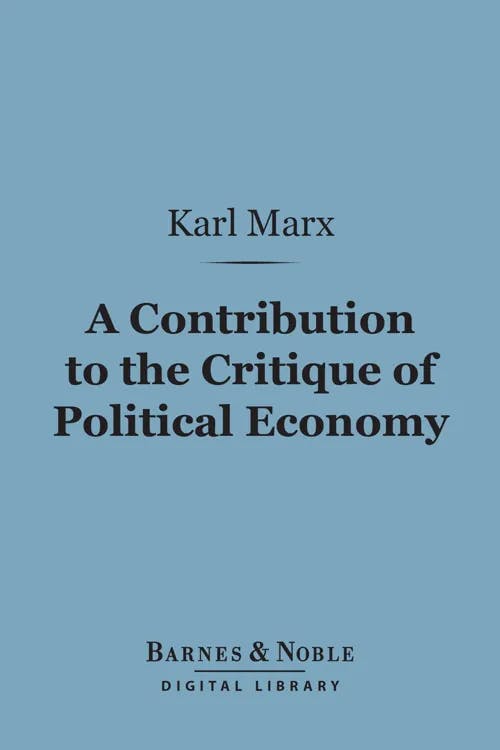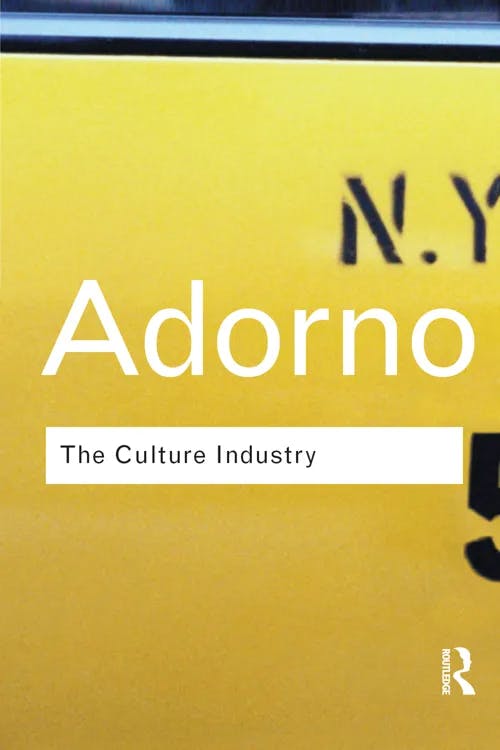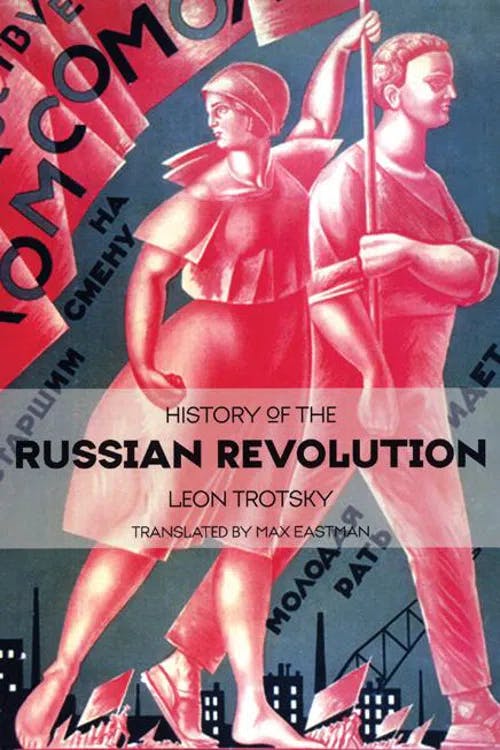What is the Base-Superstructure Model?
MA, Sociology (Freie Universität Berlin)
Date Published: 05.02.2024,
Last Updated: 05.02.2024
Share this article
Defining the base-superstructure model
Originating from Marxian theory, the base-superstructure metaphor is used to describe how the relations of production— i.e., the economic and class relations — within a given society are the primary underlying forces driving matters of politics, culture, ideology, and social norms. For Karl Marx and subsequent theorists of his work, the relations of production serve as the base, while the arenas of politics, culture, and society sit on top of that as the superstructure. For example, the base-superstructure metaphor would dictate that many of our common-sense views and cultural norms – such as the ideal of achieving career success – stem from the imperative of capitalism that we dedicate much of our lives to wage labor. As J. Wilczynski explains in An Encyclopedic Dictionary of Marxism, Socialism and Communism,
Marxism is noted for its support of e.d. [economic determinism], maintaining that the material BASE determines the SUPERSTRUCTURE. There are two schools of Marxist thought on the question. The proponents of 'narrow' e.d. hold that the determination proceeds only in one direction from the material base to the superstructure. In the 'broad' interpretation, which is more commonly accepted, it is conceded that the base is also affected by the superstructure. (2019)
J. Wilczynski
Marxism is noted for its support of e.d. [economic determinism], maintaining that the material BASE determines the SUPERSTRUCTURE. There are two schools of Marxist thought on the question. The proponents of 'narrow' e.d. hold that the determination proceeds only in one direction from the material base to the superstructure. In the 'broad' interpretation, which is more commonly accepted, it is conceded that the base is also affected by the superstructure. (2019)
Thanks to the works of thinkers like Antonio Gramsci, Louis Althusser, and others, this idea has been broadened in a more nuanced way. Rather than describing the unidirectional shaping of the superstructure by the base, writers like Gramsci have explored how the two interact — while still maintaining Marx’s original premise that societies are oriented around their relations of production. Today, the concept of the base and superstructure is still used by Marxist scholars in numerous disciplines including sociology, political theory, and psychology. That said, it is not without its critics. Namely, many reject the primacy this model places on class relations in shaping power dynamics, over other forces such as patriarchy or racial supremacy.
In this study guide, we will trace the genealogy of the concept as it originally appeared in the works of Marx and Friedrich Engels. Then we will cover the perspectives of those who further developed the idea — namely Gramsci, Althusser, Theodor Adorno, and Max Horkheimer. Finally, we will explore some of the prominent critical standpoints on this concept as reflected in poststructuralism, feminism, and liberalism.
Genealogy of the term in Marxian theory
The idea of the base and superstructure originates from Marxist theory, both in the fact that Marx and Engels use the concept in their writing, and because it stems from their overarching analysis of historical materialism. In terms of the latter, Marx and Engels engaged in extensive study of societies throughout history, and determined that the underlying relations of production are the main drivers shaping the course of events. In The Communist Manifesto, they write,
Modern bourgeois society with its relations of production, of exchange and of property, a society that has conjured up such gigantic means of production and of exchange, is like the sorcerer, who is no longer able to control the powers of the nether world whom he has called up by his spells. (1848, [2014])
Karl Marx and Friedrich Engels
Modern bourgeois society with its relations of production, of exchange and of property, a society that has conjured up such gigantic means of production and of exchange, is like the sorcerer, who is no longer able to control the powers of the nether world whom he has called up by his spells. (1848, [2014])
In other words, even the political ruling classes ultimately are governed by the relations of production in the service of capital accumulation. Namely, they must abide by the laws of these material forces in order to maintain their power.
Marx explicitly invokes the metaphor of base and superstructure in A Contribution to the Critique of Political Economy:
The sum total of these relations of production constitutes the economic structure of society—the real foundation, on which rise legal and political superstructures and to which correspond definite forms of social consciousness. The mode of production in material life determines the general character of the social, political and spiritual processes of life. (1859, [2011])
Karl Marx
The sum total of these relations of production constitutes the economic structure of society—the real foundation, on which rise legal and political superstructures and to which correspond definite forms of social consciousness. The mode of production in material life determines the general character of the social, political and spiritual processes of life. (1859, [2011])
Marx asserted that the material economic conditions (the base) are what shape every other aspect of society (the superstructure) under capitalism – right down to our very ways of thinking and behaving.
The idea that material life determines the social, political, and spiritual life of society was groundbreaking — as other political ideologies and schools of thought such as liberalism, tend to place less emphasis on class relations. The concept of the base and superstructure, therefore, distinguishes Marxist thought. Nevertheless, even many Marxists regard the base-superstructure metaphor in Marx’s original writings as too narrow and lacking nuance. Thus, thinkers like Gramsci, Althusser, Horkheimer, and Adorno have taken a broader interpretation of it in ways that have become closely associated with accepted definitions of the term today.
Perspectives on the base-superstructure model
Marx’s writings have been excavated and further explored by many scholars who have taken concepts introduced in his work and developed them. The notion of the base-superstructure model offers a case in point, as the interactions between the economic and material forces of society with other arenas, such as politics and culture is a central theme in Marxian theory over the last century.
Next, we will explore three key perspectives on how the base-superstructure metaphor has guided the thinking of prominent theorists on this subject ranging from Gramsci and Althusser to various members of the Frankfurt School. In general, they have argued for a looser interpretation of the concept that reflects the complexity of how capitalism shapes all areas of society.
Louis Althusser, overdetermination, and ideology
The French Marxist philosopher, Louis Althusser, is one of the most notable figures to bring more nuance to the idea of the base superstructure in his discourses on psychoanalysis and ideology. He believed that Marx’s concept provided an important point of departure for further exploration:
These specific relations between [base] and superstructure still deserve theoretical elaboration and investigation. However, Marx has at least given us the ‘two ends of the chain’, and has told us to find out what goes on between them: on the one hand determination in the last instance by the (economic) mode of production; on the other, the relative autonomy of the superstructures and their specific effectivity. (Althusser, For Marx, 1968, [2007])
Louis Althusser
These specific relations between [base] and superstructure still deserve theoretical elaboration and investigation. However, Marx has at least given us the ‘two ends of the chain’, and has told us to find out what goes on between them: on the one hand determination in the last instance by the (economic) mode of production; on the other, the relative autonomy of the superstructures and their specific effectivity. (Althusser, For Marx, 1968, [2007])
Althusser uses the psychoanalytic concept of overdetermination to expand upon the “relative autonomy of the superstructures.” The idea of overdetermination essentially describes a phenomenon that has multiple causes. As Althusser’s biographer Luke Ferretter elaborates,
While any given fact in the life of a society, from a news report or a novel to a revolution, is always determined [...] by the economic base of the society in which it was produced, it is also always determined, in varying degrees, by all the other levels of that society. In fact, Althusser argues, there is never any instance in which the economy is the sole determinant factor of a given historical event. (Louis Althusser, 2007)
Luke Ferretter
While any given fact in the life of a society, from a news report or a novel to a revolution, is always determined [...] by the economic base of the society in which it was produced, it is also always determined, in varying degrees, by all the other levels of that society. In fact, Althusser argues, there is never any instance in which the economy is the sole determinant factor of a given historical event. (Louis Althusser, 2007)
This intervention into Marxian theory served as a key point of departure for Althusser’s influential work On the Reproduction of Capitalism: Ideology and Ideological State Apparatuses (1970, [2014]). Specifically, he argued for a more agentic view of the state apparatus — the conglomeration of institutions within the superstructure that helps maintain the economic base. Althusser viewed ideology as a key dimension of state power in coercing people to accept their exploitation under capitalism. For example, he discusses how the education system serves as a place where children are ideologically conditioned through discipline, pedagogy, and curricula to become obedient workers.
In these ways, for Althusser, ideology serves to mask the material realities of society in order to obscure the asymmetrical power dynamics that are essential to capitalism. Moreover, you might have noticed that there is more interaction between the base and superstructure in Althusser’s vision. The economic base might lead to a certain set of institutions and ideologies that rise in service to it, such as the education system, but in turn, these institutions and ideologies also become instrumental in maintaining the base. Now let’s turn to the work of Antonio Gramsci who takes this a step further by arguing that we internalize these ideologies as common-sense norms.
Antonio Gramsci and cultural hegemony
The base-superstructure concept features heavily in Antonio Gramsci’s Prison Notebooks (1929–1935). Here he expands on Marx’s idea of the superstructure to develop his theories about political economy. Gramsci argues that the superstructure is comprised of a political apparatus that uses force through the police and military to maintain the economic base, but that this is not the only way that the bourgeoisie maintains class domination. He believed that cultural hegemony, which consists of dominant norms and common-sense ideas, was just as important in reinforcing the power of the ruling classes under capitalism. Steve Jones describes how cultural hegemony is asserted via matters of civil society:
In Gramsci’s widest definition of the term it is ‘the ensemble of organisms commonly called “private”’ (1971: 12) and it is therefore as much a matter of individual behaviour, tastes and values as it is a matter of regulated cultural institutions. Clearly this model of the superstructure is far removed from Marx’s assertion that it is the set of institutions which transmit a monolithic bourgeois ideology. Civil society certainly includes the legal apparatus, but it also includes children’s parties, shopping trips and going on holiday. As it becomes more and more a matter of ‘everyday life’, so it becomes increasingly difficult to recognize that civil society has some connection with the operations of power. (Antonio Gramsci, 2007)
Steve Jones
In Gramsci’s widest definition of the term it is ‘the ensemble of organisms commonly called “private”’ (1971: 12) and it is therefore as much a matter of individual behaviour, tastes and values as it is a matter of regulated cultural institutions. Clearly this model of the superstructure is far removed from Marx’s assertion that it is the set of institutions which transmit a monolithic bourgeois ideology. Civil society certainly includes the legal apparatus, but it also includes children’s parties, shopping trips and going on holiday. As it becomes more and more a matter of ‘everyday life’, so it becomes increasingly difficult to recognize that civil society has some connection with the operations of power. (Antonio Gramsci, 2007)
In this passage, we can also see a distinction between Althusser’s theory on ideology and Gramsci’s views on cultural hegemony. Whereas Althusser argues that ideology is disseminated from the ruling classes through top-down coercion via institutions such as schools, Gramsci saw that this process was even more insidious. For Gramsci, we internalize views that benefit the dominant classes as if they were common sense.
In Work Won’t Love You Back, Sarah Jaffe illustrates one such example of how this plays out in contemporary times:
The idea that work should be a source of fulfillment has become common sense in our world, to the extent that saying otherwise is an act of rebellion. The Italian theorist Antonio Gramsci reminded us that common sense itself is a product of history, that popular beliefs are in fact material forces, and they change when material conditions change. His concept of hegemony explains to us how one group comes to arrange the world in its own interests, through culture and ideas as well as material forces. (2021)
Sarah Jaffe
The idea that work should be a source of fulfillment has become common sense in our world, to the extent that saying otherwise is an act of rebellion. The Italian theorist Antonio Gramsci reminded us that common sense itself is a product of history, that popular beliefs are in fact material forces, and they change when material conditions change. His concept of hegemony explains to us how one group comes to arrange the world in its own interests, through culture and ideas as well as material forces. (2021)
Here, the notion that wage labor ought to be a source of passion and fulfillment, despite it being the site of our exploitation under capitalism, is a key manifestation of cultural hegemony. This demonstrates how commonly held beliefs do not appear out of thin air but are linked to material forces. Gramsci also believed we could resist ruling class domination by intervening and challenging these common-sense views by creating alternatives that challenge the status quo.
Theodor Adorno on the culture industry
Members of the Frankfurt School, such as Theodor Adorno and Max Horkheimer, also engage with the concept of the base-superstructure. However, they take an even looser interpretation of the idea than Althusser and Gramsci. In Dialectic of Enlightenment (1944, [2016]), Adorno and Horkheimer voice their skepticism of the simple causality of historical processes implicit in ideas like the base-superstructure model. Rather, they observed how widely-held Enlightenment values could shape historical events in catastrophic ways, as they had observed the rise of fascism in Germany. Still, they took some inspiration from the model in their work on the culture industry.
The culture industry describes the commodification of culture and mass media. This industry serves the interests of the ruling class by harnessing people's desires to manufacture consent for consumption under capitalism and keeping people complacent in their own exploitation. As Adorno writes in his essay, “Transparencies on Film” (1966),
The consumers are made to remain what they are: consumers. That is why the culture industry is not the art of the consumer but rather the projection of the will of those in control onto their victims. The automatic self-reproduction of the status quo in its established forms is itself an expression of domination.” (in The Culture Industry: Selected Essays on Mass Culture, 2020)
Theodor Adorno
The consumers are made to remain what they are: consumers. That is why the culture industry is not the art of the consumer but rather the projection of the will of those in control onto their victims. The automatic self-reproduction of the status quo in its established forms is itself an expression of domination.” (in The Culture Industry: Selected Essays on Mass Culture, 2020)
In this sense, media and entertainment represent another critical dimension of the superstructure that is used to maintain the economic base.
The culture industry also helps reinforce the underlying material relations of society because it also serves as a profitable market in itself, at the expense of the working class. Continuing with Adorno in The Culture Industry: Selected Essays on Mass Culture,
Amusement under late capitalism is the prolongation of work. It is sought as an escape from the mechanized work process, and to recruit strength in order to be able to cope with it again. (1966, [2020])
Moreover, as J.M. Bernstein observes in the introduction to the aforementioned text,
Because mechanization has such power over man's leisure, and so profoundly determines the manufacture of leisure goods, experiences of mass culture are inevitably after-images of the work process itself. (2020)
The movie Barbie (2023) serves as an example of the culture industry today and how it functions within the superstructure to maintain the economic base. This film simultaneously functions as an advertisement for the Mattel franchise that encourages people to consume both at the box office and in stores. In this sense, it shows how, “amusement under late capitalism is the prolongation of work” because our entertainment and leisure time become profitable to the capitalist class, just as our wage labor (Adorno, 1966, [2020]). Moreover, the messaging and aesthetics represented in this film reinforce societal norms around liberal feminism as the pinnacle of progressivism while ignoring class relations. Thus, it ultimately does little to challenge the bourgeois ruling order.
Base-superstructure criticisms
The above scholars are examples of those who — despite recognizing that reality is more nuanced — still found utility in the base-superstructure metaphor for describing how society is structured under capitalism. Others have rejected the concept outright, mainly because it places too much emphasis on the economic base as the foundational element driving all other social processes. The following critiques represent some main points of contention, as found in feminism, liberalism, and poststructuralism. These schools of thought take issue with the base-superstructure model for its economic determinism, its neglect of other systems of power driving society, and its reductiveness.
Feminist critique
Feminist scholars have critiqued the base-superstructure model for its neglect of gender dynamics and for ignoring the ways that patriarchy also structures social reality. Even Marxist feminists, such as Nancy Fraser, argue that traditional Marxist analyses often overlook how patriarchy and gender relations intersect with and shape class structures. They also contend that patriarchy and heterosexism cannot simply be reduced to a function of class, but that they constitute their own distinct forms of oppression. As Fraser writes in Fortunes of Feminism,
In my account, then, injustices of misrecognition are as serious as distributive injustices. And they cannot be reduced to the latter. Thus, far from claiming that cultural harms are superstructural reflections of economic harms, I have proposed an analysis in which the two sorts of harms are co-fundamental and conceptually irreducible. From my perspective, therefore, it makes no sense to say that heterosexist misrecognition is “merely” cultural. That locution presupposes the very sort of base-superstructure model, the very sort of economistic monism, that my framework aims to displace. (2013)
Nancy Fraser
In my account, then, injustices of misrecognition are as serious as distributive injustices. And they cannot be reduced to the latter. Thus, far from claiming that cultural harms are superstructural reflections of economic harms, I have proposed an analysis in which the two sorts of harms are co-fundamental and conceptually irreducible. From my perspective, therefore, it makes no sense to say that heterosexist misrecognition is “merely” cultural. That locution presupposes the very sort of base-superstructure model, the very sort of economistic monism, that my framework aims to displace. (2013)
Here, injustices of misrecognition include forms of identity-based discrimination on the grounds of gender or sexual orientation. For Fraser, these are distinct and irreducible to class oppression — even if the two intersect, for example in that injustices of misrecognition could lead to fewer economic opportunities. The same logic can extend to other forms of injustice such as racial inequalities, demonstrating another area where the base-superstructure model requires more nuance, as it does not encapsulate all systems of oppression or show how they interact.
Values critique
As alluded to in Horkheimer and Adorno’s arguments in Dialectic of Enlightenment, others claim that values and ideals precede and shape the structures of society rather than the other way around. Such is the case in Conscripts of Modernity (2004) where David Scott traces the power of Enlightenment ideals in spurring the Haitian Revolution. Scott argues that class conflict, "cannot be simply read off from the economic base or social structure. There is also an important subjective factor at work which cannot be dismissed" (2004).
Scott's work refers to Leon Trotsky's History of the Russian Revolution (1930, [2008]) to make his argument. As Trotsky writes,
The dynamic of revolutionary events is directly determined by swift, in-tense and passionate changes in the psychology of classes which have already formed themselves before the revolution.
Leon Trotsky
The dynamic of revolutionary events is directly determined by swift, in-tense and passionate changes in the psychology of classes which have already formed themselves before the revolution.
Thus, ideas shape subjectivities which, in turn, dictate how people act and what course society as a whole will take. Therefore, those who make a values-based argument about the base and superstructure find that it ignores the power of ideas in structuring social reality.
Poststructuralist critique
Finally, as part of the poststructuralist tradition, others believe the base-superstructure metaphor is little more than a construct that limits the true, complex nature of social reality. Theorists such as Jean Baudrillard and Michel Foucault, for example, argue for a more decentralized view of power that is not shaped through structures such as an economic base but are reproduced continually through micro-interactions between people and institutions. As Anne Schwan and Stephen Shapiro explain in How to Read Foucault's Discipline and Punish,
In his own analysis, Foucault represented power as exercised rather than possessed, as decentralized rather than exercised from the top down, and as productive rather than repressive. Equipped with this model of power, Foucault was able to focus on the power relations instead of the subjects related; to show how power relations at the microlevel of society make possible global effects of domination such as class or patriarchal power, without taking these theoretical unities as its starting point; and to give an account of how subjects are actually constituted through power relations. (2011)
Anne Schwan and Stephen Shapiro
In his own analysis, Foucault represented power as exercised rather than possessed, as decentralized rather than exercised from the top down, and as productive rather than repressive. Equipped with this model of power, Foucault was able to focus on the power relations instead of the subjects related; to show how power relations at the microlevel of society make possible global effects of domination such as class or patriarchal power, without taking these theoretical unities as its starting point; and to give an account of how subjects are actually constituted through power relations. (2011)
In other words, power itself is the force that produces hierarchies and social relations. The economic and material dimensions of society are just one aspect in an assemblage of dynamics that constitute relations of power, rather than the sole determining factor.
If you’d like to delve deeper into Foucault’s writing on power, check out our study guide, “What is Foucault's Theory of Power & Knowledge?”
Closing thoughts
In summary, it is generally believed that the base-superstructure metaphor as referenced in Marx’s original work is too rudimentary to accurately describe social reality. That said, some key Marxist scholars have still seen it as a useful jumping-off point for understanding the politics, culture, and social norms under capitalism as stemming from an economic base — even if, in actuality, the base and superstructure interact and mutually reinforce one another. It has proven, for instance, to be a generative concept in Althusser’s theories on ideology, Gramsci’s work on cultural hegemony, and Adorno’s writings on the culture industry. It is also important to note that this concept has faced significant criticisms for being too reductive and for ignoring how values and ideals, as well as other systems of oppression, shape social reality. Thus, the base-superstructure model remains a widely debated dimension of Marx’s theoretical legacy.
Even with these criticisms in mind, the base-superstructure metaphor and the aforementioned theories it has inspired can be useful for understanding the contemporary world. In an increasingly globalized world, it can help us to see how matters of the economy result in cultural homogeneity on such a widespread scale. It also offers a helpful framework of analysis for making sense of pop cultural phenomena, as we have witnessed in the example of the recent Barbie movie. The concept of the base and superstructure can also be an instructive concept for analyzing the trajectories of technological innovations and surveillance in the digital sphere as being driven by market imperatives. Finally, the theory of the base and superstructure helps to highlight some of the underlying material factors for why many societies are seemingly so indolent about addressing climate change.
Thus, even if it is not an exhaustive metaphor encapsulating all aspects of society, the base-superstructure analogy can still provide a good point of intervention for making sense of the role that economics have in driving events — as well as in impeding social progress.
Further reading on Perlego
Black Marxism, Revised and Updated Third Edition (2020) by Cedric J. Robinson
Foucault: The Birth of Power (2017) by Stuart Elden
Illuminations: Essays and Reflections (1968) by Walter Benjamin, Hannah Arendt and Henry Zohn
Ideology: An Introduction (2020) by Terry Eagleton
Jameson, Althusser, Marx (RLE Marxism) (2020) by William C. Dowling
The Routledge Guidebook to Gramsci's Prison Notebooks (2014) by J. Schwarzmantel
What is the base-superstructure model in simple terms?
What is an example of the base and superstructure?
Who are the figures associated with the base-superstructure model?
Bibliography
Adorno, T. W. (2020) “Transparencies on Film,” in Bernstein, J.M. (ed.) The Culture Industry: Selected Essays on Mass Culture. Routledge. Available at: https://www.perlego.com/book/1629142/the-culture-industry-selected-essays-on-mass-culture-pdf
Althusser, L. (2007) For Marx. Verso. Available at:
https://www.perlego.com/book/3785632/for-marx
Althusser, L. (2014) On the Reproduction of Capitalism: Ideology and Ideological State Apparatuses. Verso. Available at:
Bernstein, J.M. (2020) “Introduction,” in Bernstein, J.M. (ed.) The Culture Industry: Selected Essays on Mass Culture. Routledge. Available at: https://www.perlego.com/book/1629142/the-culture-industry-selected-essays-on-mass-culture-pdf
Ferretter, L. (2007) Louis Althusser. Routledge. Available at: https://www.perlego.com/book/1613486/louis-althusser-pdf
Fraser, F. (2013) Fortunes of Feminism: From State-Managed Capitalism to Neoliberal Crisis. Verso. Available at: https://www.perlego.com/book/730939/fortunes-of-feminism-from-statemanaged-capitalism-to-neoliberal-crisis-pdf
Gramsci, A. (2005) Selections from the Prison Notebooks. Lawrence Wishart.
Horkheimer, M., and Adorno, T. W. (2016) Dialectic of Enlightenment. Verso. Available at: https://www.perlego.com/book/730948/dialectic-of-enlightenment-pdf
Jaffe, S. (2021) Work Won’t Love You Back: How Devotion to Our Jobs Keeps Us Exploited, Exhausted and Alone. Hurst Publishers. Available at: https://www.perlego.com/book/2426405/work-wont-love-you-back-how-devotion-to-our-jobs-keeps-us-exploited-exhausted-and-alone
Jones, S. (2007) Antonio Gramsci. Routledge. Available at: https://www.perlego.com/book/1615764/antonio-gramsci-pdf
Marx, K. and Engels F. (2014) The Communist Manifesto. HarperTorch. Available at: https://www.perlego.com/book/602671/the-communist-manifesto-pdf
Marx, K. (2011) A Contribution to the Critique of Political Economy. Barnes & Noble. Available at: https://www.perlego.com/book/3714414/a-contribution-to-the-critique-of-political-economy-barnes-noble-digital-library-pdf
Schwan, A. and Shapiro, S. (2011) How to Read Foucault's Discipline and Punish. Pluto Press. Available at: https://www.perlego.com/book/665285/how-to-read-foucaults-discipline-and-punish-pdf
Scott, D. (2004) Conscripts of Modernity: The Tragedy of Colonial Enlightenment. Duke University Press Books. Available at: https://www.perlego.com/book/1466061/conscripts-of-modernity-the-tragedy-of-colonial-enlightenment-pdf
Wilczynski, J. (2019) An Encyclopedic Dictionary of Marxism, Socialism and Communism: Economic, Philosophical, Political and Sociological Theories, Concepts, Institutions and Practices - Classical and Modern, East-West Relations Included. De Gruyter. Available at: https://www.perlego.com/book/1165201/an-encyclopedic-dictionary-of-marxism-socialism-and-communism-economic-philosophical-political-and-sociological-theories-concepts-institutions-and-practices-classical-and-modern-eastwest-relations-included-pdf
Filmography
Barbie (2023) Directed by Greta Gerwig. Warner Bros.
MA, Sociology (Freie Universität Berlin)
Lily Cichanowicz has a master's degree in Sociology from Freie Universität Berlin and a dual bachelor's degree from Cornell University in Sociology and International Development. Her research interests include political economy, labor, and social movements. Her master's thesis focused on the labor shortages in the food service industry following the Covid-19 pandemic.











